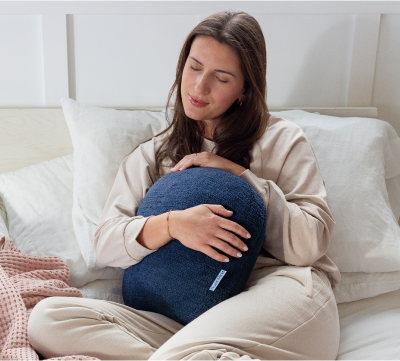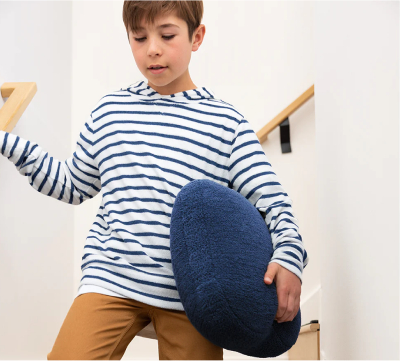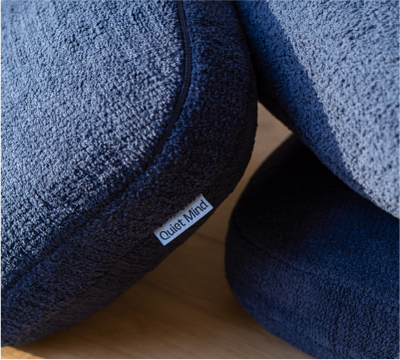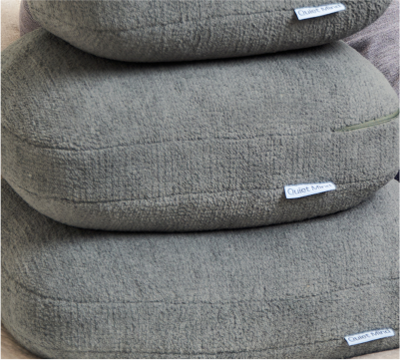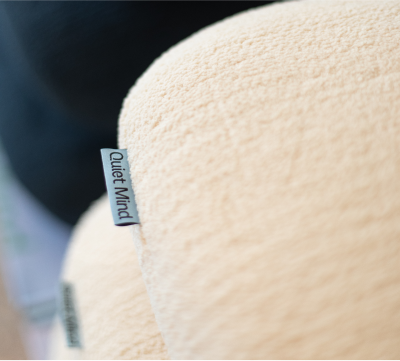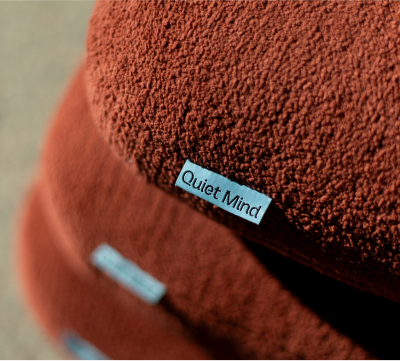Living with ADHD can feel like navigating a world that moves at a different pace. Distraction, overwhelm, and difficulty staying organized are common challenges—but so is the search for tools that support daily life in a more grounded, manageable way.
While medication is a helpful option for many, others explore non-pharmaceutical strategies as part of a broader support system. These may include adjustments to lifestyle, diet, and daily routines—approaches that aim to foster structure, regulate energy, and support mental clarity.
This guide offers a look at some of these natural strategies. It’s not about replacing medical care or offering one-size-fits-all solutions—but rather about understanding how small, thoughtful changes may contribute to a sense of steadiness, focus, and wellbeing over time.
What Causes ADHD?
ADHD is a complex neurodevelopmental condition that appears to involve a mix of genetic, neurological, and environmental influences. While no single factor has been identified as the cause, understanding what may contribute to ADHD can help individuals and families explore more informed, supportive strategies.
Genetic, Neurological, and Environmental Factors
Research suggests that ADHD may run in families, indicating a potential genetic component. Some studies have also observed differences in brain activity related to areas involved in attention, impulse control, and executive function. These differences are still being explored and may vary from person to person.
Environmental influences—such as exposure to certain toxins during early development, high-stress experiences in childhood, or irregular sleep—have also been studied for their possible role in how ADHD symptoms present or change over time.
It's important to remember that these factors don’t point to any one “cause,” but rather offer insight into the many dimensions that might shape a person’s experience. Approaching ADHD with this broader perspective can support more compassionate, individualized care.
ADHD in Children vs. Adults
ADHD can look different depending on a person’s age, life stage, and environment. In childhood, it may involve outward signs such as restlessness, difficulty sitting still, or challenges with following instructions. In adulthood, symptoms can feel more internal—such as difficulty managing time, staying organized, or navigating emotional overwhelm.
Recognizing how ADHD may shift over time can help in identifying supportive strategies. For children, this might involve creating structure through daily routines and offering consistent, gentle guidance. Adults may find that mindfulness, planning tools, or lifestyle adjustments contribute to a greater sense of clarity and calm.
While experiences vary widely, understanding ADHD across the lifespan allows for more compassionate, personalized approaches—ones that honor both the challenges and the strengths that can come with neurodivergence.
Why Consider Natural ADHD Treatments?
There’s no single path to managing ADHD, and what works for one person may not be right for another. For some, medication offers valuable support. Others may explore additional or alternative options—particularly if they’re looking for approaches that feel more holistic, gentle, or sustainable over time.
Natural strategies aren’t about fixing or suppressing who you are. Instead, they aim to support your overall well-being by creating conditions that may help improve daily functioning. This could include exploring nutrition, adjusting routines, practicing mindfulness, or integrating sensory tools that encourage calm and structure.
These approaches don’t offer instant results—but over time, they may help create steadier rhythms and support a greater sense of clarity and focus.
Benefits of Natural ADHD Treatments
While natural methods aren’t intended to replace clinical treatment, some people find them helpful as part of a broader care plan. Here are a few ways they may contribute to overall well-being:
|
Benefit |
How It May Help |
Examples |
|
Fewer Side Effects |
Some natural strategies may be easier to tolerate compared to medication for certain individuals. |
Omega-3 supplements, mindfulness practices |
|
Whole-Body Support |
These methods often focus on overall health, not just ADHD-related symptoms. |
Regular movement, supportive sleep routines |
|
Sustainable Habits |
Over time, small daily habits may help create structure and improve emotional regulation. |
Consistent routines, sensory supports |
Exploring natural approaches doesn’t mean doing less—it’s about working with your body in a way that feels respectful and balanced.
Natural Remedies for ADHD Without Medication
For individuals seeking non-medication options to support ADHD, natural strategies may offer a valuable starting point. These approaches often focus on creating supportive routines, making intentional dietary choices, and exploring behavioral tools that foster a sense of rhythm, calm, and mental clarity.
While they may not replace medical care, they can complement it—especially when tailored to your needs and practiced consistently over time.
Lifestyle, Diet, and Behavioral Approaches
Managing ADHD naturally is not about doing everything perfectly—it’s about small, repeatable habits that may help support daily functioning.
-
Lifestyle
Gentle structure can make a meaningful difference. Daily movement, consistent sleep, and routines that reduce sensory overwhelm may help ease day-to-day challenges. Physical activity, in particular, has been associated with improved focus and mood regulation in both children and adults. -
Diet
A nutrient-rich diet may support cognitive and emotional health. Some individuals find that foods containing omega-3 fatty acids, lean protein, and complex carbohydrates help promote steadier energy and attention. Avoiding processed foods, artificial dyes, and added sugars may also reduce overstimulation for some. -
Behavioral Tools
Structured daily routines, visual reminders, and positive reinforcement techniques may reduce stress and enhance organization. Tools like timers, planners, or gentle accountability systems can offer external support for internal regulation.
The goal isn’t to overhaul your life overnight—but to explore which changes feel supportive, sustainable, and aligned with how your brain functions best.
Evidence Behind Natural Interventions
While research into natural approaches for ADHD is ongoing, several strategies have shown promising results in supporting symptom management when used alongside professional care:
- Dietary changes: A review published in the Food and Behaviour Research noted that elimination diets—particularly those removing artificial additives—may reduce symptoms in some children.
- Mindfulness and meditation: According to the Journal of Attention Disorders, mindfulness-based practices have been associated with improvements in attention, emotional regulation, and executive functioning in adults.
- Physical activity: Studies such as one published in the Frontiers in Psychology have found that regular aerobic exercise may help reduce impulsivity and improve behavioral outcomes in children with ADHD.
These findings suggest that integrating certain natural interventions into daily life may offer complementary benefits—but results can vary, and guidance from a qualified professional is always recommended.
Diet and Nutrition for ADHD: What to Eat and Avoid
What you eat doesn’t just nourish your body—it also plays a role in mental clarity, emotional balance, and energy regulation. While no specific diet “treats” ADHD, many people find that making thoughtful adjustments to food choices can support their overall well-being and focus.
ADHD-Friendly Foods That May Support Focus
Some foods are considered supportive for brain function, particularly those rich in nutrients linked to attention and cognitive regulation.
- Omega-3 fatty acids: Found in fatty fish (like salmon), walnuts, flaxseeds, and chia seeds, omega-3s are essential fats that have been studied for their role in brain health.
- Lean proteins: Sources like eggs, beans, chicken, and lentils provide amino acids that help the brain produce neurotransmitters.
- Complex carbohydrates: Whole grains, fruits, and vegetables release energy steadily and may help stabilize blood sugar—supporting sustained focus throughout the day.
The key is balance: combining protein, fiber, and healthy fats in meals may reduce spikes in energy and support steadier concentration.
Ingredients That May Worsen Symptoms
Some individuals with ADHD may be more sensitive to certain additives or food components that can heighten restlessness, irritability, or energy fluctuations.
|
Category |
Consider Reducing or Avoiding |
|
Artificial additives |
Food dyes, preservatives, artificial sweeteners |
|
Excess sugar |
Soda, candy, processed snacks |
|
Highly processed foods |
Fast food, prepackaged meals, refined carbohydrates |
|
Saturated/trans fats |
Fried foods, margarine, high-fat dairy |
While reactions vary, tracking how certain foods affect focus, mood, or energy may help you make more informed dietary choices. Consulting a registered dietitian can also be useful when navigating dietary adjustments for ADHD.
ADHD Supplements and Vitamins That May Help
Nutritional support can be one part of a broader ADHD care plan. While supplements are not a cure or substitute for professional guidance, some individuals explore specific vitamins and minerals that may help support cognitive function, focus, and emotional regulation.
Before starting any supplement, it's important to speak with a qualified healthcare provider—especially if you're already taking medication or managing other health conditions.
Omega-3 Fatty Acids, Magnesium, and Zinc
Certain nutrients have been studied for their role in brain health and behavior, and may offer gentle support when included as part of a balanced approach to ADHD.
-
Omega-3 Fatty Acids
Found in fatty fish (like salmon), walnuts, flaxseeds, and algae oil, omega-3s are essential fats that play a role in brain structure and function. Some studies suggest that increasing omega-3 intake may support attention and reduce restlessness in children and adults. -
Magnesium
This mineral supports hundreds of processes in the body, including those related to nervous system function and muscle relaxation. Low magnesium levels have been observed in some individuals with ADHD, though more research is needed on supplementation benefits. -
Zinc
Zinc is involved in neurotransmitter activity and immune function. Some research has explored its connection to attention and behavior regulation, especially in children.
It's important to remember that effects vary between individuals, and benefits are often subtle rather than immediate. Supplements are most effective when paired with a nutritious diet and other supportive habits.
How to Choose High-Quality Supplements
The supplement market can be overwhelming, so knowing what to look for helps ensure both safety and effectiveness:
- Look for third-party testing: Choose brands that follow GMP (Good Manufacturing Practice) standards and offer lab-tested products.
- Check for clean labels: Avoid unnecessary additives, fillers, or artificial colorings.
- Confirm dosing and form: Make sure the supplement contains a bioavailable form of the nutrient in a dose recommended by your healthcare provider.
- Avoid unverified health claims: Be cautious of products that promise fast results or claim to “cure” ADHD.
Working with a registered dietitian or integrative healthcare professional can help you choose supplements that align with your needs.
Exercise and Movement for Managing ADHD Naturally
Movement isn’t just about physical health—it’s also one of the most accessible, research-supported ways to support focus, mood regulation, and cognitive function. For people with ADHD, incorporating regular physical activity can provide structure, release built-up energy, and improve mental clarity.
While exercise isn't a substitute for treatment, it can be a powerful tool in daily life when used consistently and intentionally.
Best Types of Exercise for ADHD
Different types of movement may support focus, body awareness, and emotional regulation in different ways. There’s no perfect workout—what matters most is choosing activities that feel good and are easy to maintain.
-
Aerobic Exercise
Activities like running, swimming, cycling, or brisk walking have been linked to improvements in attention, mood, and energy regulation. Just 20–30 minutes a day may offer noticeable shifts over time. -
Martial Arts or Structured Classes
Disciplines like karate or taekwondo combine physical activity with mental discipline, which can support impulse control and concentration. -
Yoga and Mindful Movement
Practices that combine movement with breath—like yoga, tai chi, or stretching routines—may help calm the nervous system and bring awareness to the present moment.
Rather than focusing on intensity or perfection, aim for consistency and enjoyment. Movement that feels intuitive and grounding is more likely to become a supportive habit.
How Physical Activity May Support Focus and Mood
Exercise supports the brain and body in several interconnected ways:
- It stimulates the release of dopamine, serotonin, and norepinephrine—neurotransmitters involved in attention and emotional regulation.
- It provides an outlet for restlessness or excess energy, which can be particularly helpful during periods of overstimulation.
- It helps regulate sleep, which is often disrupted in individuals with ADHD.
- It can improve executive function—skills like planning, organizing, and transitioning between tasks.
Even short bursts of movement can offer a reset during the day. A walk, a dance break, or a few minutes of stretching can gently redirect energy and improve focus without forcing stillness.
Behavioral Strategies and Routines for ADHD Without Medication
Structure isn’t about rigidity—it’s about creating a rhythm your brain can rely on. For people with ADHD, building predictable routines and using external tools can make it easier to manage time, reduce stress, and stay focused.
These strategies are not quick fixes, but when practiced consistently, they may provide a sense of stability and ease in daily life.
Creating Structure Through Daily Routines
Many individuals with ADHD find that starting the day with a clear plan helps reduce mental clutter. Instead of relying on memory or impulse, external reminders can gently guide attention and effort.
Consider:
- Setting consistent wake-up and wind-down times to anchor your day
- Using planners, visual schedules, or phone reminders to manage tasks
- Breaking large goals into small, actionable steps, and celebrating progress
- Designing routines around energy levels—placing more demanding tasks when focus tends to be highest
There’s no one-size-fits-all routine. The goal is to create gentle frameworks that make decision-making and transitions feel smoother.
Using Positive Reinforcement and Goal Setting
Encouragement and positive feedback can go a long way in reinforcing helpful behaviors. For both children and adults, tracking progress and recognizing small wins can build confidence and reduce frustration.
This might look like:
-
Using point systems, visual trackers, or simple checklists
Offering rewards that feel meaningful and motivating - Pairing feedback with encouragement, not pressure
Motivation can ebb and flow with ADHD. Reinforcement tools help refocus attention on progress, not perfection.
Mindfulness, Meditation, and ADHD
In a world full of stimulation, mindfulness offers a return to stillness. It’s not about emptying the mind—but about noticing the present moment with less judgment and more awareness. For some individuals with ADHD, mindfulness and meditation may help improve focus, regulate emotions, and reduce impulsivity over time.
Breathing Techniques and Guided Practices
Mindfulness doesn’t need to be complicated. A few minutes of intentional breathing can help settle racing thoughts and bring clarity.
Try starting with:
- Box breathing: Inhale for four counts, hold for four, exhale for four, hold again for four.
- Body scan meditation: Slowly shift attention through different parts of your body, releasing tension as you go.
- Guided meditation apps or audio: These can provide structure and help beginners stay anchored.
It’s okay if the mind wanders—that’s part of the practice. Gently returning to the breath is the real work.
Apps and Tools to Support Mindful Focus
Technology can be a useful ally when it comes to building mindfulness habits. Some options to explore:
- Headspace: Offers beginner-friendly meditation sessions tailored to focus and attention
- Insight Timer: Free guided meditations, including those for ADHD and stress
- Smiling Mind: A not-for-profit app with sessions for children, teens, and adults
Experimenting with different formats can help you discover what feels most accessible and effective.
Natural Sleep Solutions for ADHD Symptoms
Sleep and ADHD are deeply intertwined. Difficulties falling or staying asleep can make it harder to manage attention, mood, and memory the next day. While sleep challenges are common, they’re also addressable—with gentle, consistent strategies.
Bedtime Routines and Sleep Hygiene Tips
Creating a predictable and calming nighttime routine may help signal to your brain that it’s safe to wind down. Try building a sequence of activities that feel relaxing and repeatable.
Options include:
- Dimming lights an hour before bed
- Taking a warm bath or shower to lower core body temperature
- Reading (physical books) in soft lighting
- Doing a brief body scan or breathing exercise
Maintaining a consistent bedtime—even on weekends—can also support your circadian rhythm and help regulate melatonin production.
Managing Screen Time Before Bed
Exposure to screens before bedtime—especially those that emit blue light—can interfere with the natural production of melatonin, the hormone that helps us sleep.
To reduce this impact:
|
Strategy |
Why It Helps |
|
Power down 1 hour before sleep |
Allows melatonin levels to rise naturally |
|
Use night mode or blue-light filters |
Reduces the stimulating effects of screens |
|
Swap screens for offline rituals |
Helps transition from alertness to restfulness |
Small changes, practiced consistently, can lead to deeper, more restorative sleep over time.
Final Thoughts on Managing ADHD Naturally
By making dietary changes, exercising regularly, and practicing mindfulness, you can manage ADHD without medication. Managing ADHD naturally means looking at your whole life and how you act. It's about making lifestyle changes.
Understanding how different things affect your ADHD symptoms is key. Pay attention to what you eat, stay active, and use mindfulness and relaxation techniques.
There are many ways to naturally manage ADHD symptoms. Here are a few:
- Eat foods rich in omega-3 fatty acids, magnesium, and zinc
- Do regular aerobic exercise like walking, cycling, or swimming
- Practice mindfulness and meditation to focus better and feel less stressed
- Keep a daily routine to help with organization and structure
|
Strategy |
Description |
Benefits |
|
Dietary Modifications |
Eat a balanced diet with fruits, vegetables, whole grains, and lean proteins |
Focus improves, symptoms lessen |
|
Regular Exercise |
Do physical activities like walking, running, or yoga |
Focus and hyperactivity get better |
|
Mindfulness Practices |
Try meditation, deep breathing, or guided imagery |
Stress goes down, emotions get better |
By adding these natural strategies to your daily routine, you can manage ADHD symptoms better. Remember, managing ADHD naturally is a journey. It takes patience, persistence, and kindness to yourself.
About QuietMind
At Quiet Mind, we believe in the power of simple, natural solutions to ease the mind and body. Our signature weighted pillows are designed to provide comforting pressure, helping to alleviate stress, anxiety, and restlessness.
Whether you're seeking a moment of calm during a hectic day or a more restful night's sleep, Quiet Mind offers tools to support your journey toward tranquility. Discover the soothing embrace of our weighted pillows and find your path to a quieter mind.
Further Insights
Gain a deeper understanding of ADHD. These articles explore its many shapes, challenges, and everyday realities.
- What type of ADHD do I have?
- What does an ADHD meltdown look like?
- What does high functioning ADHD look like?
- Why do stimulants make me sleepy adhd?
- Does caffeine help ADHD?
- Why is life with ADHD so hard?
FAQ
Can ADHD be managed without medication long-term?
Some individuals explore long-term ADHD management without medication, often by combining structured routines, lifestyle adjustments, and supportive therapies. What works best can vary from person to person, and it’s always helpful to work with a healthcare professional to build a plan that fits your needs.
Which natural approaches may support adults with ADHD?
Many adults find that regular movement, mindfulness practices, and planning tools help bring more structure and clarity to their days. These strategies may offer support when used consistently, especially alongside other forms of care.
How can mindfulness and meditation help with ADHD?
Mindfulness and meditation may support attention, emotional regulation, and stress relief. Over time, these practices can help create a sense of mental steadiness—especially when integrated gently into daily routines.
What role does diet play in managing ADHD symptoms?
Some people notice changes in energy, mood, or focus when they make intentional food choices. Diets rich in whole foods, healthy fats, and lean proteins—and low in additives and sugars—may support more balanced energy throughout the day.
Can behavioral strategies and routines make a difference in managing ADHD?
Yes—creating predictable rhythms, using visual reminders, and breaking down tasks can help reduce overwhelm and support daily functioning. Small habits, practiced consistently, may ease some of the executive function challenges often associated with ADHD.
